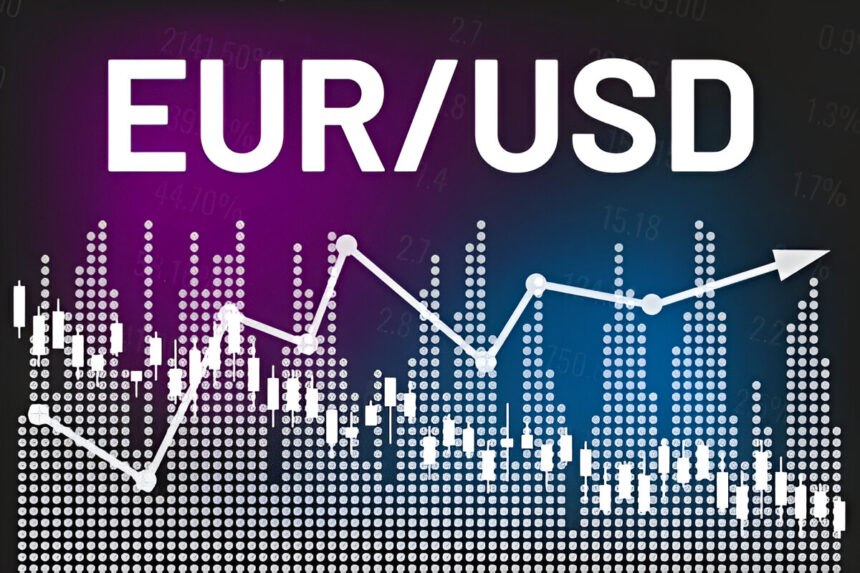EURUSD currency pair slipped lower in early Monday trading, hovering near 1.1620, after ending last week with moderate gains. Traders are showing increased caution amid growing US-EU trade uncertainty, particularly as the August 1 tariff deadline approaches—a key event that could drastically impact bilateral trade flows and market sentiment.
While the US Dollar (USD) held steady during the Asian session, the Euro (EUR) struggled to maintain upside momentum, with investors largely in risk-off mode, awaiting clarity from Washington and Brussels. The current market tone reflects heightened anxiety about potential disruptions to transatlantic trade, which could severely affect Eurozone exports and weigh on economic growth.
US Commerce Secretary Sounds Optimistic on Trade Deal
In a somewhat reassuring development, US Commerce Secretary Howard Lutnick said he remained confident that the US and EU could strike a deal before the August 1 deadline to avoid a new wave of tariffs.
“The next two weeks are going to be weeks for the record books,” Lutnick told CBS News. “President Trump is going to deliver for the American people.”
He also indicated that there is “plenty of room” for compromise and that conversations with European trade negotiators had been “constructive.” However, Lutnick emphasized that August 1 remains a firm deadline, underscoring the urgency and pressure surrounding the talks.
Despite the positive tone, markets have not reacted strongly, largely due to a lack of concrete outcomes or policy announcements. Traders appear to be waiting for tangible signs of progress before adjusting positions or committing to riskier trades.
August 1 Deadline: A Market Flashpoint
The countdown to August 1 has become the dominant theme in the EURUSD outlook. If the US moves forward with proposed 30% tariffs on EU goods, it would mark a serious escalation in trade hostilities, particularly targeting core European exports such as automobiles, steel, agricultural products, and machinery.
Such tariffs could:
Trigger retaliation from the EU, leading to broader trade disruptions.
Dampen investor confidence in the Eurozone economy.
Exert additional downside pressure on the Euro, particularly versus the Dollar and safe-haven currencies.
Given the interconnectedness of US-EU trade, even a partial breakdown in talks could cause ripple effects through supply chains, manufacturing sentiment, and business investment.
Fed’s Dovish Stance Offers Some Cushion to EURUSD
While trade concerns dominate headlines, the downside for EURUSD may be limited due to increasing speculation that the Federal Reserve (Fed) could adopt a more dovish monetary policy stance in the near term.
Last week, San Francisco Fed President Mary Daly said that expecting two rate cuts this year is “reasonable,” warning that waiting too long could pose risks to the economy. She also indicated that the Fed’s neutral rate may now be closer to 3% or higher, suggesting there’s ample room to cut rates without triggering runaway inflation.
Fed Governor Christopher Waller echoed these views, noting that while the labor market remains strong on the surface, private sector job growth is weakening. Waller went a step further, suggesting that the Fed should consider cutting rates at the July policy meeting, citing signs of slowing momentum and rising downside risks.
These comments have:
Reinvigorated market expectations for at least one Fed rate cut by September.
Placed downward pressure on the USD, limiting gains against major peers.
Provided support to EURUSD, helping the pair avoid a break below 1.1600 at least for now.
The Dollar Holds Ground but Remains Vulnerable
Despite the dovish tilt from some Fed officials, the US Dollar remains relatively firm, driven by a mix of safe-haven demand and resilient US macro data. The Dollar Index (DXY) is trading near multi-week highs, buoyed by strong readings in retail sales, consumer sentiment, and housing permits.
However, Dollar strength may not be sustained if:
US economic data starts to soften meaningfully.
The Fed signals a clear timeline for rate cuts.
Market anxiety around trade starts to ease, reducing safe-haven flows.
Therefore, while the Dollar has proven resilient in recent weeks, its upside may be capped unless future data surprises to the upside or the Fed adopts a hawkish tone—both unlikely scenarios in the current macro environment.
Eurozone Weakness Weighs on EUR
From the Euro’s perspective, ongoing economic fragility within the Eurozone continues to limit any meaningful rally attempts. Recent data paints a sluggish picture:
German industrial production fell again in June.
French inflation remained below ECB targets.
Italian services PMI shows signs of stagnation.
Moreover, the European Central Bank (ECB) remains on the sidelines, with President Christine Lagarde offering little guidance on future rate hikes. Without any material hawkish signals from the ECB, the Euro remains largely reactive to external developments, especially those stemming from US policy or global risk sentiment.
Technical Outlook: 1.1600 Remains Key Support
On the charts, the EURUSD pair is hovering just above the psychological support at 1.1600. The pair has failed to break above the 1.1670–1.1700 resistance zone, suggesting that bullish momentum remains capped in the near term.
Key technical levels to watch:
Support: 1.1600 (psychological), 1.1575 (recent low), 1.1530 (April low)
Resistance: 1.1660 (mid-July high), 1.1700 (200-day moving average), 1.1765 (June high)
A break below 1.1600 could trigger further downside toward 1.1530, while a bounce above 1.1670 would indicate growing bullish sentiment and renewed upside potential.
Upcoming Data and Events to Watch
This week offers several critical data points and events that could move the EURUSD pair:
1. US-EU Trade Negotiation Headlines
Any confirmation of progress or setbacks could result in sharp volatility.
2. Eurozone Flash PMIs (Wednesday)
These will offer a preliminary look at economic momentum across manufacturing and services sectors.
3. US Core PCE Index (Friday)
The Fed’s preferred inflation gauge could influence rate cut expectations.
4. Fed Officials’ Speeches
More dovish or hawkish commentary could shape the Dollar’s near-term trajectory.
5. ECB Meeting (Next Week)
Markets will be watching for any signs of policy recalibration amid softening inflation.
Conclusion: EURUSD in a Tug-of-War
The EURUSD pair remains trapped in a delicate tug-of-war between two powerful market forces:
Trade tensions, which pose downside risks to the Euro and global sentiment.
Dovish Fed signals, which are capping US Dollar strength and supporting EURUSD.
Until clarity emerges on the August 1 tariff deadline and Fed policy direction, the pair is likely to remain range-bound, with volatility rising on fresh headlines. For now, 1.1600 serves as a critical support level, and traders will be closely monitoring upcoming economic data for clues on where the next move will lead.
Disclaimer: This blog is for informational purposes only and does not constitute financial advice. Always conduct your own research and consult a professional advisor before making investment decisions.
[sc_fs_multi_faq headline-0=”h2″ question-0=”Why is EURUSD falling today?” answer-0=”EURUSD is under pressure due to growing caution among traders ahead of the August 1 US-EU tariff deadline. While the US Dollar remains steady, concerns about trade tensions and a lack of concrete progress in negotiations are weighing on the Euro.” image-0=”” headline-1=”h2″ question-1=”What is the significance of the August 1 deadline?” answer-1=”The August 1 deadline marks the date when the US may impose tariffs of up to 30% on a range of European goods if a trade agreement isn’t reached. This deadline is seen as a major risk event for global markets and is affecting EUR/USD sentiment.” image-1=”” headline-2=”h2″ question-2=”What support and resistance levels should traders watch for EUR/USD?” answer-2=”Key support lies at 1.1600, followed by 1.1575 and 1.1530. On the upside, resistance is seen around 1.1660, with a stronger cap near 1.1700. A break on either side could trigger a larger directional move. ” image-2=”” count=”3″ html=”true” css_class=””]









